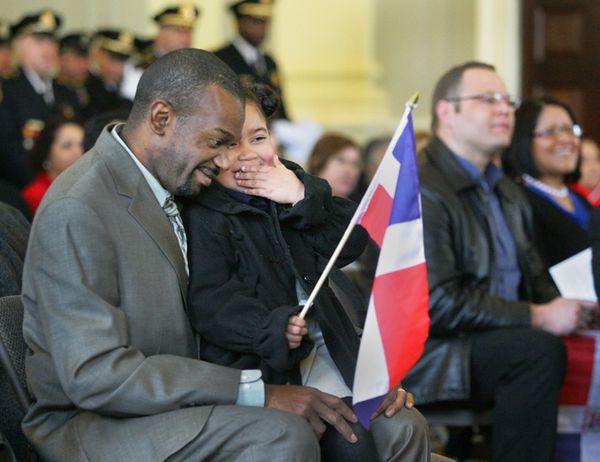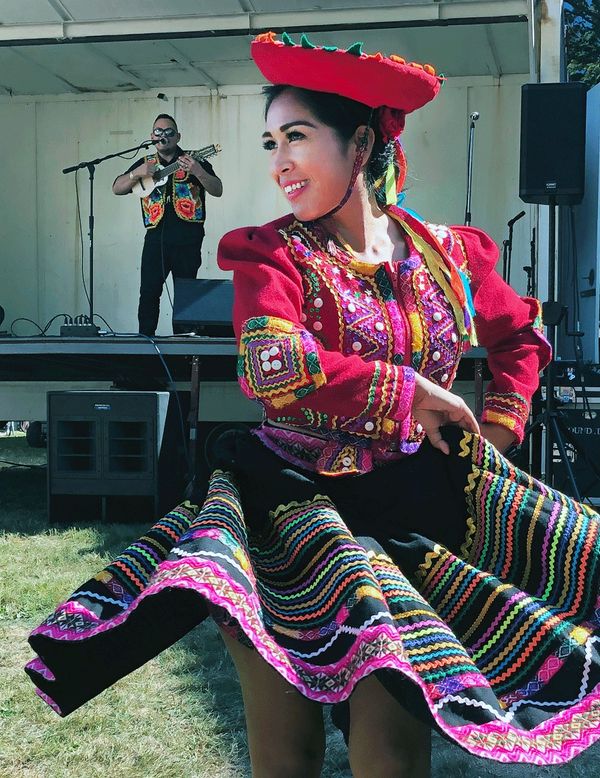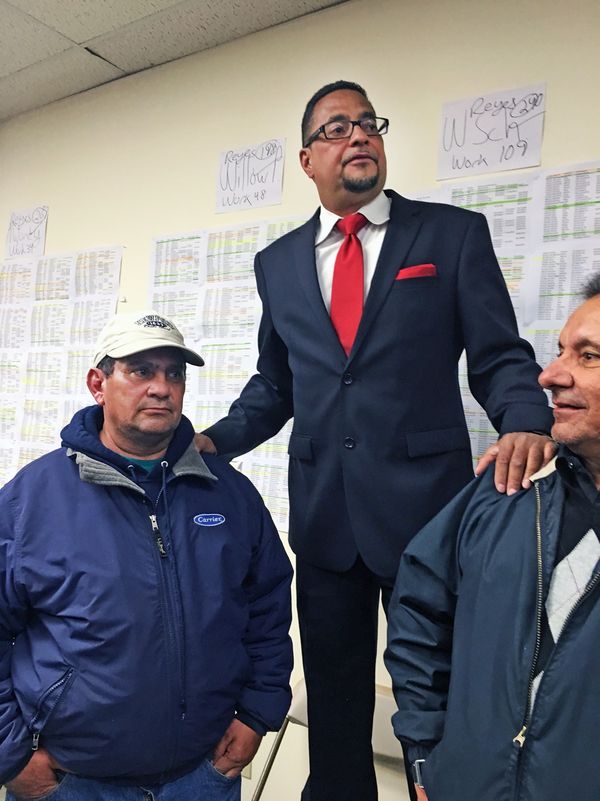(Subscribe to The Brass File to get it e-mailed directly to your in-box by clicking on the link at the bottom of this page. Thank you.)
By Geraldo Reyes Jr.
What does the Latino vote look like in 2021? There many authors, books and studies on the subject; but in Connecticut and across America, it varies widely based on geography, gender, religion, socio-economic status, political status, family values, age, country of origin, and of course the ranges of conservative, liberal and progressive ideology. It’s preposterous to think that because we all speak Spanish that Latinos would all vote the same way, or think the same way. That is over simplifying our vote.
Hispanic voters are expected to outnumber Black voters and become the largest minority voting bloc in 2021. A record 60 million Latinos are living in the United States, roughly half of that population will be able to cast a ballot in November.
In CT most of the Latino elected officials benefit from and are very appreciative of the opportunity to represent all constituents in the House & Senate Chambers. Many of us benefit greatly from the Latino voters, especially in larger municipalities where the percentage of Latino voters is well over 30%. We have been watching the Latino vote transform over the last 25 years and our numbers as a voting “bloc” have now grown to where we can make a large impact on the outcome of elections – local, state and nationally. Long gone are the days that Latinos are primarily Democrat. In fact, many Latinos have assimilated in all facets of the American dream, and that includes expanding their knowledge and branching out to different parties, religions, organizations, and ideology.

Celebration Dominican Mayor For the Day in Waterbury. |
There are large number of Hispanics in Florida, New York, New Jersey, Connecticut, North Carolina, Virginia, Illinois, Ohio, Pennsylvania, Massachusetts and Rhode Island. In Connecticut we have a large Ecuadorian community in Stamford, large Dominican communities in Danbury and Waterbury, a large Peruvian community in Hartford, large Mexican communities in New Haven and Waterbury, a large Venezuelan community in Norwalk, and an influx of Dominicans into Torrington. The largest Puerto Rican communities are in Bridgeport, New Haven, Hartford, Waterbury, New Britain, Meriden and Willimantic. In Puerto Rico, politics are very important for the people and it’s spoken almost everywhere, but so far that has not translated completely to the mainland.
The Cuban voting bloc in South Florida has assisted in keeping Florida red, they have opposed US-trade relations with Cuba and support a 50-year-old embargo on the island. That’s being challenged more and more as liberals retire and move south along with the large influx of Puerto Ricans relocating to Central Florida in the past five years. The Puerto Rican population is approx. 1.2 million and growing. Traditionally Puerto Ricans on the mainland have been considered stalwart Democrats, but as witnessed in Florida, there has been strong support for Republicans and their values.
The Colombian, Ecuadorian and immigrants from Central America have a large population here stateside, but a sizable percent are undocumented and not ineligible to vote. Those that can vote lean towards the Democratic Party. The large percentage of Mexicans who can vote are against illegal crossings and support immigration laws and are against liberal policies. They believe they came here legally and went through the process, and so should everyone else.

Peruvians celebrating at The Gathering in 2019. |
The Venezuelan bloc in Norwalk leans Republican and opposes socialist ideology as they see their own family and friends in a failed system back in their homeland. They have an impression that America will overtake Venezuela’s failed leadership and intervene, I don’t think that’s on the table at this time. The Peruvian bloc in Hartford leans Democrat but are limited to approx. 40% that are eligible to cast a vote in this country. The same can be stated for Brazilians who lean Republican and Dominicans who lean Democratic as communities with huge voting interest but are limited by legal status. These two communities are very political and can engage in remarkably interesting political conversations here and abroad, they want to vote in American elections.
The point here is quite simple, these Latino votes are all quite different, and complicated. The Latino vote should never be grouped together – a mistake many ambitious politicians often make. In 2019 projections were that 32 million Latinos would cast a ballot in 2020, a 15% increase from 2016. This number is expected to grow as more Latinos turn 18 every year and will be eligible to cast a vote. Additionally, Puerto Ricans continue to migrate to the mainland as the economy worsens on the island, and they’re coming here for the same things as anyone else; opportunities for a job, health, and a piece of the American dream. There is an enthusiastic group of Latino voters eager to cast votes in this election; it is a voting bloc of immigrants who have come here legally and become American citizens. They want to cast a vote in the USA. Many of this group have come here from corrupt countries with failed policies.
There are many folks from many countries who have been here for years illegally and cannot vote, but they have American children who have come of age and they’re representing the values from their guardians who bring a totally different perspective.
An enthusiastic Latino voting bloc is not taken seriously by all candidates, I’ve witnessed campaigns that totally ignore a voting bloc that could make a difference in their own race. The Latino vote is normally taken for granted or engaged as a last-ditch effort, it’s also the first line item cut as the campaign funds start drying up.
I want to touch on how I feel knowing my vote is routinely taken for granted and how our identity is reduced when we are grouped as this voting “bloc”, it’s a big political gaff.

State Representative Geraldo Reyes Jr. winning in 2016. |
As a proud Puerto Rican I am offended by the word LATINX, so when I’m asked, I always say I’m Puerto Rican. I’m not Spanish, Hispanic, or Latino. I also take offense to how government treats our communities, either through punitive laws and regulations, or through indifference and inaction. When funding gets tight, we are the first item cut if there was any funding to begin with. The Puerto Rican community had its difference with the Trump administration’s policies toward Puerto Rico, but many Puerto Ricans still support Republican values on the “Choice” situation as they are pro-life and against abortion.
But there were deep grievances with President Trump in Puerto Rico. A case in point – the president found $13 billion in relief for PR two months before the general election. The hurricanes and their damage were two years ago, and many people lost lives, struggle with health and medicine and had property damage. Right before the 2020 election he decided to send relief? The current PR governor endorsed Trump and the comes monies and relief? These are American citizens and they should not be used as political pawns.
Watching our friends and neighbors suffer and cry for help, to see it fall on deaf ears is both enraging and trauma inducing. When President Trump said, “I love Hispanics”, folks cringed. It is maddening to see how they allocated $13 billion in assistance for Puerto Rico when the election was slipping away from them. We are reached out to mostly in last-ditch efforts.
2020 was the most difficult and unique election I’ve ever been involved in, because on top of everything I previously mentioned, we’re in the middle of a pandemic. We had lost so many in our communities, and many of us have friends and family who have personally suffered from this crisis. It is a sad time for our nation, as we are witness to crisis after crisis and unrest across the country.
The protesting in 2020 and level of civic engagement was at the highest level I have ever seen in our communities. The social hierarchy and norms of our country were challenged. Youth were enraged and engaged in higher numbers. It was time to channel that energy into the voting booth. And after the votes were tallied NBC News reported that over half of eligible Latinos voted in 2020 — a historic first. NBC also reported that 1 in 10 voters in last year’s election were Latino, with “extraordinary” registration and turnout among younger and U.S.-born Hispanics.
Times are changing.
(Geraldo Reyes Jr. is a State Representative in Connecticut’s 75th District (Waterbury’s South End), and is the Chairman of the Black and Puerto Rican Caucus in the Connecticut State Legislature)

